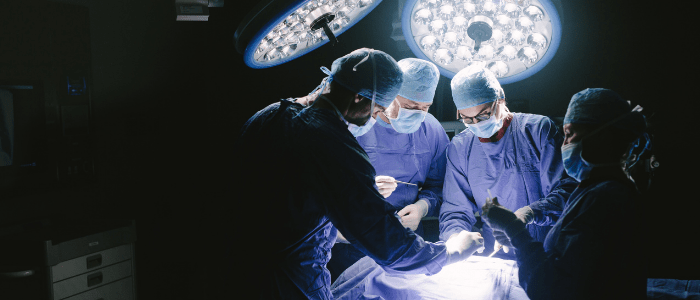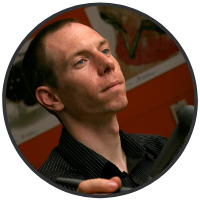[Q&A] Panel discussion: 3D printing in surgery and the operating room of the future

Unfortunately we did not have time to address all the questions submitted to the live Q&A session during the 3DMedNet panel discussion, ‘3D printing in surgery and the operating room of the future’ with Amy Alexander (Mayo Clinic, MN, USA), Dominic Eggbeer (PDR, Cardiff Metropolitan University, UK) and Joyce Lim (Alder Hey Children’s Hospital, Liverpool, UK). Here, the panel addresses the leftover questions offline.
If you would be interested in working with 3DMedNet to produce a webinar, please contact us today to find out more about showcasing your experts >>
Speakers:
 Amy Alexander
Amy Alexander
Senior Biomedical Engineer
Mayo Clinic (MN, USA)
Amy Alexander is a Senior Biomedical Engineer in the Mayo Clinic Department of Radiology’s Anatomic Modeling Lab in Rochester. In her role, Alexander converts 2D radiological images into 3D models and patient-specific surgical cutting guides. These life-size, patient-specific models and guides help surgeons from different specialties prepare for complex procedures. Additionally, these 3D prints form a communication bridge for patients regarding their personal surgical plan. Alexander holds a Bachelor of Science in Biomedical Engineering from the Milwaukee School of Engineering (WI, USA) and a Master of Science in Engineering Management from the Milwaukee School of Engineering Rader School of Business. Alexander has served on the SME Medical 3D Printing Workgroup (MI, USA) for over 3 years, is a member of the Radiological Society of North America’s 3D Printing in Medicine Special Interest Group (IL, USA) and is certified in Additive Manufacturing through SME. Alexander is an active member of Radiological Society of North America, Healthcare Information and Management Systems Society, and SME.
 Dominic Eggbeer
Dominic Eggbeer
Professor of Healthcare Applications of Design
PDR, Cardiff Metropolitan University (UK)
Dominic Eggbeer is a Professor of Healthcare Applications of Design at PDR, Cardiff Metropolitan University. His research focuses on the design and development of personalized medical devices, applying his knowledge to surgical implants, facial prosthetics, dental devices and other areas of rehabilitative medicine.
In addition to his academic research, he manages a small, ISO 13485 compliant commercial team in the design of patient specific implants and other devices. Eggbeer also has a leading role in collaboration, dissemination and in supporting broad uptake of novel design engineering approaches in healthcare.

Consultant Pediatric Cardiologist
Alder Hey Children’s Hospital (Liverpool, UK)
Joyce Lim is a Consultant Pediatric Cardiologist at Alder Hey Children’s Hospital with 20 years experience in pediatric cardiology. She has extensive interests in cross sectional imaging (cardiac MRI and CT) as well as fetal cardiology. She has been utilizing patient-specific 3D heart models to assist cardiac surgeons and catheter interventionists in decision making and planning for cardiac procedures.
Dr Lim’s passion for 3D printing together with cross-sectional imaging and fetal cardiology has helped her innovate and trial alternative teaching and training methods for the future generation of pediatric cardiologists and cardiac surgeons. Dr Lim has been involved in Hands-on-Surgical Training for cardiac surgeons as well as interventionists. Alder Hey Hospital has a large 3D-printed heart collection of congenital cardiac anomalies, enabling her and her team to conduct training courses and regular teaching for future pediatric cardiologists, cardiac surgeons, medical students and sonographers. She frequently uses 3D-printed hearts to assist in the discussion of cardiac problems with patients ranging from the antenatal group to adult congenital cardiac patients.
Q&A
Thank you for the very interesting panel. My question is whether any of the speakers have experience with intraoperative 3D-printed implants and the intraoperative workflow? Which additive manufacturing procedures to you use?
Amy Alexander: While Mayo Clinic is working toward manufacture and use of 3D-printed implants at the point-of-care (POC) using an EOS M290 Ti6Al4 printer/material, development of the SOPs and regulatory requirements are still in flux. Given the current workflow for models and guides, the idea is that implants would follow a similar path:
- Order for patient-specific anatomic implant is received in EHR
- Imaging is acquired or ordered with anatomic modeling protocol (protocols developed by Radiologists)
- Segmentation of patient’s imaging takes place by Radiology Technologist (Radiologist reviews, edits, and approves)
- CAD of segmented anatomies takes place by Engineer (Radiologist approves)
- Virtual Surgical Planning (VSP) takes place between Surgeon, Engineer, and Radiologist
- CAD of implant takes place by Engineer (Surgeon and Radiologist approved)
- Build prep, print, and post-processing of implant takes place (GMP facility at POC)
- Sterilization takes place in the Surgical Core in accordance with the Instructions for Use (IFU)
- Surgery and implantation takes place
Dominic Eggbeer: I have not used 3D printing within the operating theatre if this is what is meant by the question. I am not sure that it is realistic or necessary to use it in that situation. I am involved with the production of devices ahead of procedures. This includes the design of anatomical models that have been operated on in a digital environment to produce a reconstruction. This reconstruction is used as a jig to pre-bend stock plate implants to the correct contours for osteotomies and fracture repair. They are also used for pressing custom implants such as orbital floor reconstruction. There are some significant advantages to this indirect patient specific implant approach: it can be more cost effective and faster than using additive manufacture in metal and it can be deployed within hospitals more easily. However, you also acquire the geometry limitations of stock plates and it is much more difficult to use these bent plates with custom surgical guides. The team I now lead began the production of custom surgical guides for drilling and cutting in around 2000 and I joined in 2003, where we were using stereolithography to produce autoclavable guides. We then adopted the first generation metal additive manufacture technology (from Realizer in Germany), which enabled us to produce in stainless steel and cobalt chrome. This allowed us to produce more robust devices. We predominantly still recommend metal having published work that illustrates how it can produce accurate and robust guides. The downside is cost. 3D Systems (SC, USA) stereolithography technology is still our go to since we have found it to be robust and highly accurate, more so than the Formlabs (MA, USA) and similar alternatives. Having said that, the Formlabs technologies are gaining popularity, primarily due to the much lower purchase price and compact size. We avoid polyjet technology have had bad reliability experiences and concerns around the ability to remove residual monomer contamination. We also use low-cost extrusion machines for training models that do not need to be handled by the surgical team in the operating theatre.
Joyce Lim: We are currently not using intraoperative implants in cardiology.
Do you have any suggestions for people who want to learn more about the specific skills you three are discussing?
Amy Alexander:
- Clarkson College has a Certificate (Medical)
- MIT has a Certificate (General)
- Purdue has a few Certificates (General)
- U Maryland has a Certificate (General)
- Penn State has a Certificate (General)
- SME has a Certification (General)
- Weber State University BS Advanced Radiological Sciences
- Penn State MS AM & Design
- Penn State ME AM & Design
- The Ohio State MS of Global Engineering Leadership
- UW Stout MS Manufacturing Engineering
- U Maryland MS AM
- Carnegie Mellon MS AM
- Johns Hopkins MS Medical and Biological Illustration
- U of Alberta MS in Rehabilitation Science
- U Glasgow MS Medical Visualization and Human Anatomy
- Nottingham University MS AM and 3DP
- Sheffield University MS AM and Advanced Manufacturing Technologies
- Derby University MS Advanced Materials and AM
- Cranfield University MS Metal AM
Dominic Eggbeer: Speak to people like me! Also, be critical when learning about technologies. 3D printing is full of promise, but must be considered within the context of robust systems that ensure safety. Discover courses, work with the end users, be rigorous about implementing quality systems.
Joyce Lim: Depending on which field/subspecialty we are talking about, then try to approach those who have experience in that particular field. Be aware that different specialties will have different requirements, but the basics are the same in terms of segmenting for the 3D models.
At the start, it is tempting to want to print everything that you segment (and may well be the case for some specialties). Be aware that at times the 3D printing would not be indicated for all your segmenting (this is my experience for cardiology). Be strict about what you need to print and why you need to print, as well as what/how you need to print it.
Attending courses and speaking to other who have been doing it for a while is always helpful.
Is it possible to print different cells to a defected area of a patient in the operation room?
Dominic Eggbeer: Not that I’m aware of yet, but I have worked with people far cleverer than me who’re pioneering this kind of technology!
How would you define the distribution between the usage of 3D-printed visual models and 3D-printed applicative models – models that actually being interacted with surgical tools/medical devices?
Amy Alexander: The current landscape at Mayo Clinic for the use of anatomic models and anatomic guides in the OR is approximately 40% anatomic models for surgical simulation/planning and patient education, and 60% anatomic guides, which are sterilized and used within the sterile field.
Dominic Eggbeer: Risk. The fundamental difference between models being handled by the surgical team and one being used pre-operatively is linked to cleanliness and ability to sterilize. If producing models that are going to be sterilized, you must validate that: the materials meet prerequisite requirements for the ability to be sterilized (without affecting accuracy) using the intended method; create a controlled system for the production of devices; validate that system by undertaking the necessary tests according ISO 10993 and more.
For models that are just for lab use, the risk levels and associated control methods are much less involved, but it is still important to ensure you develop a controlled and repeatable production process.
The Medical Device Directive and new Medical Device Regulations also stipulate that you need to ensure compatibility of your device with others is proven. This is tricky with custom made implants in particular. In reality, each company or healthcare provider will come up with their own solution.